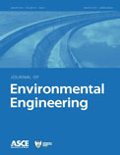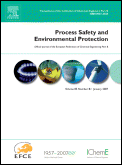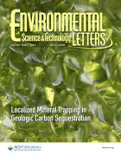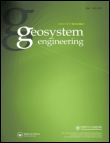
Frontiers of Environmental Science & Engineering
Scope & Guideline
Catalyzing change through innovative environmental insights.
Introduction
Aims and Scopes
- Environmental Pollution and Remediation:
Research on various forms of environmental pollution, including air, water, and soil contamination, along with innovative remediation technologies and methods. - Sustainable Resource Management:
Studies focusing on the efficient management and recovery of resources, including waste treatment, recycling, and the circular economy. - Advanced Analytical Techniques:
Development and application of novel analytical methods for environmental monitoring and assessment, including the use of machine learning and advanced sensors. - Climate Change and Ecosystem Health:
Investigations into the impacts of climate change on ecosystems and human health, addressing adaptation and mitigation strategies. - Emerging Contaminants and Risks:
Research on the occurrence, fate, and health risks associated with emerging contaminants, including pharmaceuticals and microplastics. - Innovative Engineering Solutions:
Application of engineering principles to develop new technologies for environmental protection, restoration, and sustainable practices.
Trending and Emerging
- Microplastics and Nanoplastics Research:
An increasing focus on the sources, impacts, and remediation strategies for microplastics and nanoplastics, reflecting growing public concern and regulatory attention. - Machine Learning and AI in Environmental Science:
A trend towards the application of machine learning and artificial intelligence for data analysis, predictive modeling, and optimization of environmental processes. - Climate Change Mitigation Strategies:
Research on innovative strategies to mitigate the impacts of climate change, including carbon capture technologies and sustainable energy solutions, is gaining prominence. - Bioengineering and Bioremediation:
Emerging interest in bioengineering approaches, such as the use of microbial systems for pollutant degradation and resource recovery, is becoming more prevalent. - Integrated Waste Management Solutions:
A shift towards integrated approaches that combine waste management, resource recovery, and environmental protection to achieve sustainability goals.
Declining or Waning
- Traditional Wastewater Treatment Methods:
There has been a noticeable decrease in papers focusing solely on conventional wastewater treatment techniques, as researchers shift towards more innovative and integrated approaches. - Single-Contaminant Studies:
Research focusing on the effects and treatment of single contaminants is declining, with a growing preference for multi-contaminant studies that reflect real-world complexities. - Historical Pollution Assessment:
Papers centered around historical pollution assessments are less frequent, possibly due to a shift towards more immediate and actionable research addressing current environmental crises. - Basic Environmental Monitoring:
The emphasis on basic environmental monitoring techniques is waning, as studies increasingly incorporate advanced technologies and interdisciplinary methods.
Similar Journals

CRITICAL REVIEWS IN ENVIRONMENTAL SCIENCE AND TECHNOLOGY
Advancing Environmental Knowledge Through Critical AnalysisWelcome to CRITICAL REVIEWS IN ENVIRONMENTAL SCIENCE AND TECHNOLOGY, an esteemed journal published by Taylor & Francis Inc. This journal has been at the forefront of environmental research since its inception in 1993, spanning a wide range of disciplines including environmental engineering, pollution control, waste management, and water science. CRITICAL REVIEWS holds an impressive Q1 ranking in multiple categories, including Environmental Engineering and Pollution, demonstrating its critical role in advancing knowledge within the field. With a remarkable Scopus ranking—placing it in the top 1% for Environmental Science categories—this journal serves as an invaluable resource for researchers, professionals, and students alike, providing comprehensive reviews and analyses that catalyze innovative solutions to pressing environmental challenges. Though currently not open access, the journal's content is accessible through various academic platforms, ensuring that cutting-edge research is available to a global audience. Join the community of scholars dedicated to enhancing our understanding of environmental science and technology through rigorous investigation and critical discourse.

Water Conservation Science and Engineering
Advancing Sustainable Solutions for Water PreservationWater Conservation Science and Engineering, published by SPRINGERNATURE, is a vital academic journal dedicated to advancing the fields of environmental engineering, ocean engineering, waste management, and water science and technology. Since its inception in 2016, the journal has quickly established itself within the academic community, achieving a commendable Q3 ranking across multiple categories in 2023. With an ISSN of 2366-3340 and an E-ISSN of 2364-5687, it is accessible to a global readership eager to explore the latest research and innovations in water conservation and sustainable practices. Although currently not open access, the journal is committed to publishing high-quality scholarly articles that provide insights into effective water management strategies, innovative engineering solutions, and the critical importance of preserving our water resources. Based in Singapore, Water Conservation Science and Engineering aims to foster interdisciplinary collaboration among researchers, professionals, and students, making it an essential resource for anyone passionate about environmental sustainability and preservation.

Resources Environment and Sustainability
Exploring Innovative Solutions for a Sustainable WorldResources Environment and Sustainability is a premier academic journal published by ELSEVIER, dedicated to advancing knowledge in the fields of environmental science, engineering, and sustainability practices. Recognized for its rigorous peer-review and high-quality research, the journal boasts an impressive impact factor and consistently ranks in the first quartile across multiple categories, including Environmental Engineering, Environmental Science, Management, Monitoring, Policy and Law, and Pollution. With its Scopus rankings placing it among the top journals—#7 in Environmental Science and #12 in Environmental Engineering—this journal provides a vital platform for researchers, professionals, and students seeking to contribute to evolving policies, innovative management strategies, and cutting-edge environmental solutions. Hosted in the Netherlands, Resources Environment and Sustainability is committed to fostering interdisciplinary dialogue and disseminating high-impact research that addresses the pressing challenges of our times. This journal embraces open access principles, ensuring that the wealth of knowledge it publishes remains accessible to a global audience.

Biochar
Exploring the Future of Environmental Solutions with BiocharWelcome to Biochar, an esteemed academic journal dedicated to the exploration and advancement of biochar technology and its applications across multiple fields. Published by SPRINGER SINGAPORE PTE LTD, this journal serves as a vital platform for disseminating high-quality research that addresses the critical intersection of environmental science, soil health, and sustainable materials development. With a commendable Q1 ranking in the fields of Biomaterials, Environmental Science, Pollution, and Soil Science, Biochar is recognized for its significant impact, as evidenced by its placement in the upper percentiles across various Scopus rankings. Researchers and professionals in agricultural and biological sciences will find valuable insights and innovative methodologies that promote sustainable practices and enhance soil quality. This journal, operating from its base in Germany, is committed to fostering a collaborative environment where cutting-edge research can inform policy and practice. Engage with us as we strive to advance the science of biochar from 2019 to 2024 and beyond.

JOURNAL OF ENVIRONMENTAL ENGINEERING
Driving impactful discoveries in environmental engineering.JOURNAL OF ENVIRONMENTAL ENGINEERING, published by the American Society of Civil Engineers (ASCE), stands as a pivotal platform within the realm of environmental engineering and civil infrastructure. With an ISSN of 0733-9372 and an E-ISSN of 1943-7870, this esteemed journal has been delivering high-quality research since its inception in 1973 and continues to play a crucial role in advancing knowledge through to 2024. The journal boasts respectable impact factors, achieving Q2 rankings in Civil and Structural Engineering, Environmental Engineering, and Environmental Science, while also maintaining a solid presence in Environmental Chemistry. With Scopus rankings reflecting a strong competitive advantage across various specializations, it serves as a vital resource for researchers, professionals, and students focused on solving complex environmental challenges. Though not an open-access publication, its rigorous selection process ensures that only high-caliber studies are disseminated, making it an indispensable read for anyone involved in the interdisciplinary fields linking engineering and environmental sustainability. Addressing contemporary issues and shaping future innovations, the JOURNAL OF ENVIRONMENTAL ENGINEERING remains committed to fostering dialogue and disseminating impactful research.

PROCESS SAFETY AND ENVIRONMENTAL PROTECTION
Pioneering research that protects our planet and its people.PROCESS SAFETY AND ENVIRONMENTAL PROTECTION, published by Elsevier, is a premier academic journal dedicated to advancing the fields of chemical engineering, environmental science, and safety management. With an impressive impact factor, this esteemed journal undergoes a meticulous peer-review process and serves as a vital platform for researchers, professionals, and students seeking to disseminate cutting-edge research and innovative practices. Submissions are welcome in a wide scope of topics related to safety, risk, reliability, and environmental engineering, demonstrating its influence as a Q1 journal across multiple categories, including Environmental Chemistry and Safety, Risk, Reliability and Quality. By providing a rigorous analysis of current challenges and solutions in the domain since its inception in 1990, it continues to foster interdisciplinary collaboration and practical applications in the United Kingdom and beyond. With the journal not currently offering Open Access options, subscribers gain exclusive access to pivotal insights that shape industry standards and drive advancements in sustainable practices.

Environmental Science & Technology Letters
Unlocking innovative solutions to ecological challenges.Environmental Science & Technology Letters, published by the American Chemical Society, stands as a premier journal in the realm of environmental science and technology, focusing on pivotal studies that address pressing environmental challenges. With an impressive Q1 ranking in multiple categories including Ecology, Environmental Chemistry, and Pollution, this journal maintains a position of excellence within its field, achieving Scopus ranks that place it in the top percentile of Environmental Science disciplines. Although not open access, Environmental Science & Technology Letters offers vital insights and cutting-edge research that contribute significantly to the understanding and management of environmental issues. The journal’s objectives include disseminating ground-breaking findings and promoting discussions that lead to sustainable solutions. With convergence from 2013 to 2024, it continues to serve as an essential resource for researchers, professionals, and students committed to advancing knowledge and innovation in environmental science.

ACS ES&T Engineering
Navigating the Intersection of Innovation and Sustainability in Engineering.ACS ES&T Engineering, published by the American Chemical Society, stands as a leading journal in the realm of Chemical Engineering, Environmental Chemistry, and related fields, with a notable Impact Factor indicative of its scholarly influence. Emerging from 2021 with a vision to address contemporary challenges in engineering and environmental health, this Journal not only covers critical studies in Chemical Engineering but also excels in areas such as Process Chemistry and Technology, aligning with its Q1 status across several categories in 2023. With exceptional rankings in Scopus, including a percentile rank in the 90th for Chemical Health and Safety, it offers a significant platform for researchers, educators, and practitioners to disseminate innovative research and practices. Although the journal maintains a subscription model, its commitment to rigorous peer review and high-quality content ensures that readers gain access to pivotal findings essential for advancing knowledge and practice in a rapidly evolving scientific landscape. For those dedicated to tackling global engineering challenges, ACS ES&T Engineering is an invaluable resource.

International Journal of Integrated Engineering
Empowering researchers to shape the future of integrated engineering.International Journal of Integrated Engineering, published by UNIV TUN HUSSEIN ONN MALAYSIA, serves as a critical platform for disseminating research and advancements in the comprehensive field of integrated engineering. With an ISSN of 2229-838X, this journal is pivotal in enhancing interdisciplinary collaboration and innovation across numerous engineering domains, including Civil, Electrical, Mechanical, and Industrial Engineering. Although it currently holds various Q4 categories and competitors in the Scopus ranks, the journal consistently aims towards enhancing its impact and expanding its scope. Researchers can benefit from sharing their findings with a growing audience keen on the latest engineering developments. The journal emphasizes open access, making it a vital resource for academics, practitioners, and students alike who seek to stay informed about emerging trends and technologies in integrated engineering.

Geosystem Engineering
Driving interdisciplinary dialogue for environmental progress.Geosystem Engineering, published by Taylor & Francis Ltd, is a prominent academic journal focusing on the interdisciplinary fields of Environmental Engineering, Pollution, and Waste Management and Disposal. With an ISSN of 1226-9328 and an E-ISSN of 2166-3394, this journal has been a significant contributor to the scholarly discussions since its inception in 1998 and continues to publish impactful research up to 2024. As a recognized journal within the Q3 category for its respective fields as of 2023, it serves as a vital platform for researchers, professionals, and students aiming to disseminate findings, share innovations, and address pressing environmental challenges. Although it does not currently offer Open Access options, Geosystem Engineering remains essential for those invested in advancing sustainable practices and technologies in geosystems. The journal delivers critical insights that contribute to the development of policies and practices aimed at improving environmental quality and waste management strategies globally.